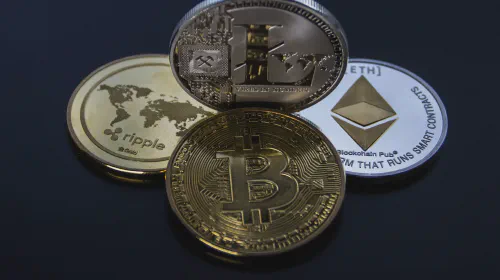The Evolution of Edge Computing: How Has Edge Computing History Shaped Modern Technology?
Salomon Kisters
Jul 10, 2023This post may contain affiliate links. If you use these links to buy something we may earn a commission. Thanks!
Edge computing has become an integral part of our modern technological landscape, dramatically transforming the way we process and utilize data.
With the increased demand for real-time, low-latency processing, edge computing has emerged as a game-changer, enabling us to process and analyze information closer to the source.
In this blog post, we will explore the evolution of edge computing, tracing its history and understanding how it has shaped modern technology.
From its humble beginnings to its widespread adoption across various industries, the impact of edge computing on data processing and connectivity cannot be overstated.
The Origins of Edge Computing
The concept of edge computing can be traced back to the early days of computing, where the centralized model was the norm. Large mainframe computers handled all data processing tasks, with users accessing the system remotely through terminals. However, as technology progressed and the volume of data increased exponentially, it soon became clear that relying solely on centralized systems was no longer efficient.
The need for faster processing, reduced latency, and improved reliability led to the first decentralized computing systems. These systems brought computation closer to the source of data generation, reducing the dependence on limited bandwidth and latency associated with transmitting data to a central data center. The birth of these decentralized systems laid the foundation for what we now know as edge computing.
Edge Computing in the Era of the Internet of Things (IoT)
The proliferation of Internet of Things (IoT) devices further accelerated the adoption of edge computing. As the number of connected devices grew rapidly, processing all the data generated by these devices in a centralized location became impractical and inefficient. Edge computing offered a solution by bringing computation closer to the devices themselves.
By distributing computing power to the “edge” of the network, edge computing allows the processing and analysis of data to happen much closer to the source. This reduces the amount of data that needs to be transmitted to a central server or cloud, thus minimizing latency and improving the overall efficiency of IoT systems.
As a practical example, consider a smart home equipped with various IoT devices, such as smart thermostats, security cameras, and voice assistants. With edge computing, the data generated by these devices can be processed locally, enabling quick response times, enhanced security, and reduced dependence on internet connectivity.
Edge Computing and Cloud Computing
Contrary to popular belief, edge computing and cloud computing are not competing concepts; instead, they are complementary technologies that work together to optimize data processing and delivery. While cloud computing offers extensive storage and computing capabilities, it is not suitable for applications that require real-time processing or have strict latency requirements.
Edge computing fills this gap by bringing computation closer to the source of data generation, allowing for quick decision-making and reducing the need for round-trip data transmission to the cloud. By combining the power of edge and cloud computing, organizations can strike the right balance between local and centralized processing, tailor-made for their specific requirements.
Use Cases and Applications of Edge Computing
Edge computing has found its way into numerous industries and use cases due to its unique advantages. Let’s look at some practical examples across different sectors:
Manufacturing and Industrial IoT
In manufacturing environments, where real-time monitoring and control are critical, edge computing offers immense value. Through local processing of sensor data on the factory floor, edge computing enables quick response times, reduces downtime, and improves overall operational efficiency. Machine learning algorithms can be deployed at the edge to identify patterns, detect anomalies, and even predict failures, allowing for proactive maintenance and optimization.
Autonomous Vehicles
Autonomous vehicles heavily rely on edge computing capabilities to make split-second decisions and ensure passenger safety. Processing data from various sensors, such as Lidar, cameras, and radar, in real-time at the edge enables the vehicle to react quickly to changing road conditions and potential hazards. Edge computing also plays a crucial role in communicating with other vehicles and the surrounding infrastructure, creating a cooperative and interconnected ecosystem.
Healthcare and Telemedicine
In healthcare,edge computing has revolutionized patient care and remote monitoring. With the capability to process sensitive data on-site, edge computing ensures patient privacy and security while enabling real-time analysis and decision-making. For example, wearable devices equipped with edge computing capabilities can monitor vital signs and alert healthcare professionals in case of emergencies, saving precious time and potentially preventing critical situations.
Edge Analytics in Retail
Retailers benefit from edge computing by deploying its capabilities directly in stores. By processing data locally, retailers can analyze customer behavior, optimize inventory management, personalize shopping experiences, and quickly identify emerging trends. Furthermore, edge computing enables real-time data synchronization with central systems, ensuring accurate stock information and enhancing supply chain visibility.
Edge Computing in Energy
The energy sector also leverages edge computing to enhance efficiency, reduce costs, and improve sustainability. By deploying edge devices on energy grids, real-time monitoring and analysis are possible, enabling demand response management, fault detection, and predictive maintenance. Edge computing also facilitates the integration of renewable energy sources, optimizing their utilization and reducing reliance on traditional power generation.
The Future of Edge Computing
As technology continues to evolve, so does edge computing. Looking ahead, we can expect several advancements and trends to shape the future of edge computing:
5G Networks and Edge Computing Synergy
The arrival of 5G networks will further accelerate the adoption and potential of edge computing. The ultra-low latency and high bandwidth offered by 5G will enable seamless connectivity between edge devices, cloud systems, and other endpoints. This synergy will unlock new possibilities, ranging from augmented reality and virtual reality applications to mission-critical services in healthcare and public safety.
Security and Privacy Concerns
With the increasing adoption of edge computing, security and privacy concerns become paramount. As more data is processed and stored at the edge, ensuring the integrity, confidentiality, and availability of data becomes crucial. Organizations must address security challenges by implementing robust encryption, access controls, and intrusion detection systems to safeguard sensitive information at the edge.
Edge AI and Machine Learning
Edge computing and artificial intelligence (AI) go hand in hand. As edge devices become more powerful and capable, we will witness an exponential growth in edge-based AI applications. Machine learning algorithms running directly on edge devices will enable real-time decision-making, anomaly detection, and personalized experiences at the edge. This advancement will unlock new frontiers in various industries, including autonomous vehicles, healthcare, and smart cities.
Conclusion
The evolution of edge computing has played a pivotal role in shaping modern technology and transforming the way we process and utilize data.
From its origins in decentralized computing to its widespread adoption alongside the rise of IoT, edge computing has become an essential component of our interconnected world.
With its practical applications across industries and its synergy with cloud computing, edge computing offers an optimized solution that balances local processing with centralized resources.
As we move forward, the growth of edge computing will continue to revolutionize industries, opening up new possibilities and enabling unprecedented levels of efficiency, reliability, and responsiveness.
Stay informed with the latest insights in Crypto, Blockchain, and Cyber-Security! Subscribe to our newsletter now to receive exclusive updates, expert analyses, and current developments directly to your inbox. Don't miss the opportunity to expand your knowledge and stay up-to-date.
Love what you're reading? Subscribe for top stories in Crypto, Blockchain, and Cyber-Security. Stay informed with exclusive updates.
Please note that the Content may have been generated with the Help of AI. The editorial content of OriginStamp AG does not constitute a recommendation for investment or purchase advice. In principle, an investment can also lead to a total loss. Therefore, please seek advice before making an investment decision.

The Importance of a Digital Payment Strategy for Businesses | Benefits & Strategies
Learn why having a digital payment strategy is crucial for businesses in today's digital world. Discover the benefits and strategies for implementing one.

Blockchain Technology and Cybersecurity: Revolutionizing Digital Security
Blockchain technology has the potential to revolutionize cybersecurity by creating secure, tamper-proof systems resistant to hacking and fraud.

How Many Polkadot Coins Are There and How Many Are Left?
Discover Polkadot (DOT), the cryptocurrency at the forefront of the Web3 revolution. Initially issued at 10 million DOTs, expanded to 1 billion through community votes, Polkadot is designed for innovation and scalability. Learn how Polkadot's unique Proof-of-Stake structure and parachain auctions are setting new standards in the blockchain space.
Protect your documents
Your gateway to unforgeable data. Imprint the authenticity of your information with our blockchain timestamp